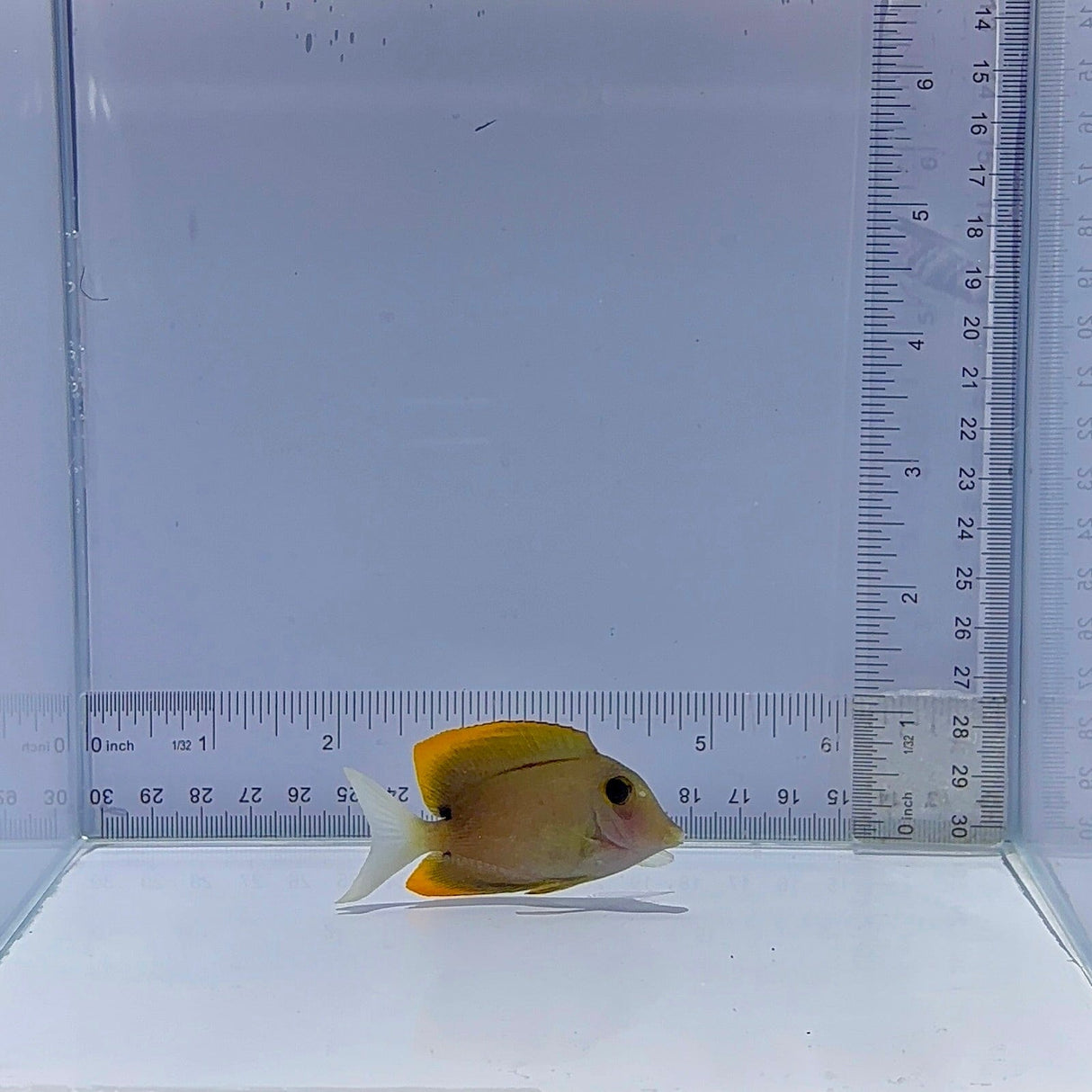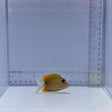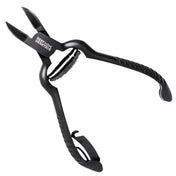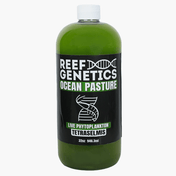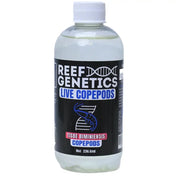Approx. Size:
Regular 1.25–3.00 Inches
XL 3.00 Inches+
Flame Fin Tomini Tang (Ctenochaetus tominiensis)
The Flame Fin Tomini Tang is a compact, algae-grazing powerhouse with striking golden accents and an elegant, angular silhouette. Native to reef slopes across the Western Pacific, this species features a dusky brown body offset by bright yellow to orange fins and distinctive tail streamers. It’s one of the few surgeonfish suitable for smaller reef tanks, offering both utility and beauty.
Tank Requirements
A minimum of 55 gallons is recommended, though larger tanks are preferred for adult specimens. Provide open swimming space paired with live rock for grazing and shelter. Strong, stable water quality and good oxygenation are key to long-term health. These tangs benefit from steady flow and appreciate tanks with high algae availability or regular supplemental feeding.
Color, Personality, and Hardiness
Flame Fin Tomini Tangs are eye-catching yet practical, combining vivid fin coloration with nonstop algae control. They are active, alert, and generally peaceful, though they may become territorial with other tangs—especially similar-shaped bristletooth species. Hardy and disease-resistant, they adapt quickly to captivity and are a reliable addition to community reef systems.
Diet and Feeding
Primarily herbivorous, Tomini Tangs thrive on a diet rich in marine algae and vegetable matter. Feed a mix of dried seaweed (nori), spirulina, and algae-based pellets, along with occasional mysis or brine shrimp. Regular grazing keeps their digestive system healthy—offer multiple small feedings daily if algae is limited in the display.
Tankmates and Behavior
Peaceful and reef-safe, this species integrates well into mixed reef communities. Avoid housing with other tangs unless in larger tanks (100+ gallons), as they may defend grazing territory. They will not harm corals or inverts, making them ideal for reef setups. Their industrious algae-eating habits help maintain a clean, balanced aquarium ecosystem.
At Top Shelf Aquatics, we take pride in ensuring your order arrives safely and in perfect condition. Here’s everything you need to know about our shipping process:
Livestock Shipping Details
- Flat Rate Shipping:
- $39.99 Out of State
- $34.99 Florida (In-State)
- Orders over $299 ship FREE!
- NO FREE Shipping during Sale Events
- Shipping Days: The calendar during checkout determines when your livestock order will arrive. Normally we ship Monday - Thursday via FedEx Priority Overnight.
Orders placed by 2 PM EST Monday - Thursday ship the same day. Orders placed after 2 PM or on Fridays will ship the next business day. - Delivery Times: Most packages arrive by 10:30 AM EST, though remote areas may experience later deliveries.
We take every measure to protect your livestock, including specialized packaging to maintain temperature and safety during transit.
Dead on Arrival (DOA) Policy
In the rare event of a DOA, you must submit a DOA Request within 2 hours of delivery (FedEx posted time). Once submitted, we will issue a replacement or store credit for the livestock. Please note:
- Shipping costs are not included in the credit.
- Refunds are not offered for livestock or shipping.
While we cannot be held responsible for delays caused by mechanical or weather issues, rest assured we’ll do everything possible to make it right!
Reef Guard Protection Plan
For ultimate peace of mind, upgrade to our Reef Guard Protection Plan. With Reef Guard, you’ll enjoy:
- Extended Livestock Guarantee: Coverage for up to 5 days.
- Priority Resolutions: Hassle-free claims with fast resolutions.
- Weather & Shipping Delay Coverage: Includes FedEx lost packages and damages.
Shipping Restrictions
- We currently ship livestock only within the continental U.S.
- Note: Due to Hawaii state law, we are unable to ship corals to Hawaii.
Now’s the perfect time to prepare your aquarium for its new additions. Consider doing a water change and ensuring space is ready. Check out our YouTube channel for detailed care instructions for your new corals!
For any questions or concerns, feel free to reach out to our support team. We’re here to help make your reefing journey a success!
5 Day Reef Guard
Temp-Control Box
Priority Overnight
Expert Care Support
